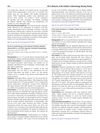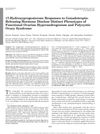November 2007 in “Cancer Epidemiology and Prevention Biomarkers” Higher C-peptide levels in African-American men and higher HbA1c levels in Caucasian men are linked to lower PSA levels.
2 citations
,
April 2023 in “Diabetes Metabolic Syndrome and Obesity” 2h-ICPR can help screen for insulin antibodies in type 2 diabetes patients.
 March 2013 in “Journal of pediatric nursing”
March 2013 in “Journal of pediatric nursing” The case emphasizes the need for careful screening in children for insulin resistance and related conditions.
1 citations
,
January 2014 in “mediaTUM – the media and publications repository of the Technical University Munich (Technical University Munich)” Pregnancy and parenthood may help regulate PCOS symptoms.
 42 citations
,
September 2007 in “The Journal of Clinical Endocrinology and Metabolism”
42 citations
,
September 2007 in “The Journal of Clinical Endocrinology and Metabolism” The research found that polycystic ovary syndrome (PCOS) has two distinct types, with one having more severe hormone and insulin issues.

